Medical waste is a type of waste that is generated by healthcare facilities such as dentist offices, hospitals, veterinary clinics, medical research labs and blood banks.
Every facility’s staff has its own answers. Practices differ, and state regulations do too. Even the definition of medical waste invites interpretation.Every day, a relatively large amount of potentially infectious and hazardous waste is generated in health care organizations like hospitals and other facilities around the world. This bio-medical waste must be carefully treated and disposed of in order to avoid contamination and the spread of infectious pathogens. That is why many health facilities and hospitals alike are required to follow very strict procedures when collecting, disinfecting and disposing of the medical waste.
Healthcare workers are often surprised to learn that 85% of the waste generated at their facility is classified as solid waste and can be disposed of as regular trash. The remaining 15% is classified as either biohazardous, hazardous, or other regulated waste and must be handled, contained, and disposed of per state and federal regulations.Thanks to recent regulations, today biohazard waste disposal companies must come to pick up the medical waste and take it to a treatment facility to be rendered safe and non-hazardous. The red bags are used to collect any waste that is soft and cannot penetrate the shell of the bag. Anything that could poke through the bags, such as needles, is collected in red hard plastic boxes that cannot be pierced by the sharp objects. It is very important that waste ends up in the proper container so as to keep everyone safe.
The waste is then collected in a designated area, depending on the health center, where a medical waste services company picks it up and takes it back to their facility. Here the waste is sorted through to remove any items that can be sent to a recycling center after it has been sterilized. Once your waste is correctly segregated and properly packaged, the only way the transporter knows the type of waste the package contains is by how it’s labeled. If your waste is transported to the wrong treatment facility because you didn’t label it correctly, employees can be injured, and machinery can be damaged. Your medical waste management company can help you understand proper segregation, packaging, and labeling of your waste so it ends up being treated according to regulations.
As previously mentioned, the generating facility is responsible for the proper classifying, segregating, packaging, and labeling of their RMW (regulated medical waste) for transport. The Department of Transportation requires specific training for all employees who package RMW for transport and for those employees who prepare the required shipping papers (often called a manifest or tracking document). This training should include the specific functions required by your facility and the RMW transporter to properly classify, package, and label your waste.
The two primary methods of treating medical waste are steam sterilization (autoclave) and incineration.
- Autoclavetreats the RMW with heat, steam, pressure, and time. Most healthcare professionals are familiar with this method, as it is used to sterilize reusable instruments. This option can be used for the majority of RMW. Waste that is autoclaved is either taken to a landfill as is or shredded first. Most RMW management companies not only shreds autoclaved waste, they send it to a waste-to-energy facility where it is used as an alternative fuel source to generate energy instead of ending up in a landfill.
- Incinerationis used to treat medical waste that can’t be autoclaved. Examples include pharmaceuticals, pathological waste, and trace chemo waste.
The EPA, as well as state environmental regulatory agencies, govern medical waste treatment, including autoclave and incineration technologies.
Did you know your health center can get hefty fines for improper disposal?
The generator’s liability for proper disposal of their RMW doesn’t end when the driver or mail carrier picks up their waste. They must assure they are utilizing permitted and approved transporters and treatment facilities to reduce potential liability. The Resource Recovery and Conservation Act (RCRA), the primary law regulating hazardous waste, was the first regulationsestablishing the “cradle-to-grave” concept of generator liability. From generation through final disposal, each entity that handles the waste is responsible for documentation of the proper chain of custody utilizing shipping papers/manifest.
Improper RMW disposal affects not only the environment but also anyone coming in contact with it. Discarded sharps, for example, represent a serious hazard to workers in solid waste disposal and recycling facilities. In addition to regulatory fines and penalties, waste generators can also face civil penalties for improper RMW management. Two San Diego County hospitals paid almost $400,000 in fines in 2011 for “…failing to separate medical waste properly; unlawful transportation of medical and hazardous waste…”
Working with a professional medical waste disposal company that provides both mail-back and pickup service, does more than provide proper packaging materials, transportation, disposal, and documentation. They also help you stay in compliance with federal and state regulations, therefore, reducing your chance of fines and lawsuits.
It’s important that your healthcare facility has all the proper training on what to do with contaminated items. Proper disposal can save lives, help the environment and save you from large fines.
